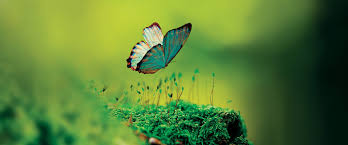The butterfly effect is a phenomenon in chaos theory, in which small changes in the initial conditions will lead to huge changes in the later state of the deterministic nonlinear system.
It was 1961 and Lorenz ran a numerical weather model as a shortcut to redo the previous weather forecast. Instead of entering the full precision value of 0.506127, he entered the value 0.506 in the printout. He observed that the prediction was completely different from the past. This incident made him think deeply and led to the famous "Chaos Theory".
In short, small changes in a complex environment can lead to unpredictable results. For example, the flapping of a butterfly's wings can cause small changes in the global atmosphere, which in turn can lead to severe weather conditions.
In 1961, the meteorologist Edward Lorenz developed a weather forecast model based on the concept of the butterfly effect, which has existed since 1890. According to his research, statistically insignificant changes have led to completely different weather conditions. In 1972, Lorenz began to use the butterfly analogy in a speech entitled "Predictability": "Does the flapping of wings of Brazilian insects trigger a tornado in Texas?"

How does it relate to the environment?
We may have completed the work of billions of butterflies and brought changes to the complex ecosystem of the earth. We may be about to witness something important, but it is difficult to know exactly what will happen at this time.
What if all the butterflies are dead?
Whenever the butterfly disappears, children of all ages are negatively affected. The problem is much more serious. Many flowering plants and butterflies coexist so closely that they are inseparable. The extinction of just one important species may cause the entire network of natural interdependence to collapse.
The sixth extinction
In the past 439 million years, there have been five catastrophic extinction events, each of which wiped out 50% to 95% of existing life. The sixth event may be in progress. We are the only reason, on the verge of being eliminated.
Scientists believe that by 2100, half of plant and animal species will be extinct. According to a survey, biologists believe that compared with climate change, the threat of mass destruction of the earth’s future is much greater.

From bad to good-positive picture
Although we have made a mess, the result is quite certain. Nevertheless, we cannot give up. Making positive changes to the system now will help us prevent bad things from happening. In addition, we buy time for technology as a barrier between us and disadvantages, and even eliminate some of the damage that has already been done.
Butterfly Effects shows that you can produce different effects with small changes. When millions of people make these small changes, we can actually drastically reduce the amount of nature lost by future generations.